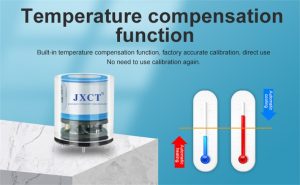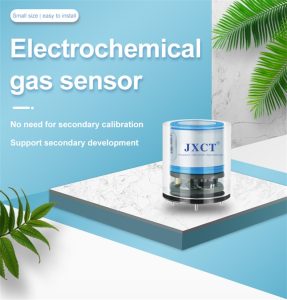Air pollution is a major environmental issue that affects the health and well-being of individuals and communities worldwide. Understanding the patterns and sources of air pollution is crucial for implementing effective mitigation strategies and safeguarding public health. In recent years, gas sensors have emerged as powerful tools for monitoring air quality and uncovering pollution patterns. In this article, we will explore the insights gained from gas sensors in unveiling air pollution patterns.

Real-time Monitoring:
Gas sensors provide real-time data on various pollutants present in the atmosphere, such as nitrogen dioxide (NO2), ozone (O3), particulate matter (PM), carbon monoxide (CO), and volatile organic compounds (VOCs). This real-time monitoring enables immediate awareness of air pollution levels, supporting timely decision-making and interventions. By continuously monitoring pollutant concentrations, gas sensors help identify pollution hotspots, high-risk areas, and sources of pollution.
Spatial and Temporal Trends:
Gas sensors offer insights into spatial and temporal trends of air pollution. By deploying a network of sensors across different locations, we can create a detailed map of pollution levels, allowing us to identify pollution patterns within a city or region. These sensors also capture temporal variations, highlighting pollution peaks during certain times of the day or specific seasons. Understanding spatial and temporal trends is crucial for implementing targeted pollution control measures and resource allocation.
Source Identification and Apportionment:
Gas sensors play a pivotal role in identifying pollution sources and apportioning their contributions to overall air pollution levels. By analyzing the chemical composition of pollutants, combined with advanced modeling techniques, it is possible to distinguish between different emission sources such as traffic, industrial activities, residential combustion, or natural processes. This information helps policymakers and urban planners develop appropriate strategies to tackle specific pollution sources effectively.
Indoor Air Quality:
In addition to monitoring outdoor air pollution, gas sensors are also valuable tools for assessing indoor air quality. Indoor environments can be polluted by various sources, including cooking, cleaning products, building materials, and occupant activities. Gas sensors can detect and measure pollutants such as carbon dioxide (CO2), formaldehyde, volatile organic compounds (VOCs), and particulate matter within indoor spaces. This enables individuals and building managers to take necessary measures to enhance indoor air quality and protect occupants' health.
Citizen Science and Community Engagement:
Gas sensors have the potential to engage citizens in monitoring air pollution and raise awareness about its impact on health and the environment. With the development of low-cost and portable sensors, individuals and community organizations can actively participate in collecting air quality data. This citizen science approach not only enhances data collection but also empowers communities to advocate for cleaner air and drive local initiatives for pollution control.
Policy and Planning:
Insights from gas sensors are instrumental in shaping air quality policies and urban planning decisions. By integrating sensor data with modeling tools, policymakers gain a deeper understanding of pollution patterns, sources, and their spatial distribution. This information helps in developing targeted policies, implementing emission control measures, and optimizing urban design to minimize exposure and improve air quality. Gas sensors provide a scientific basis for evidence-based policymaking and sustainable urban development.

Conclusion:
Gas sensors have revolutionized our ability to monitor and understand air pollution patterns. Through real-time monitoring, spatial and temporal analysis, source identification, indoor air quality assessment, citizen engagement, and policy formulation, gas sensors offer valuable insights into the complex nature of air pollution. These insights are crucial for implementing effective mitigation strategies, protecting public health, and creating sustainable urban environments. Continued research, innovation, and deployment of gas sensors will play a vital role in unveiling air pollution patterns and working towards cleaner and healthier air for present and future generations.
 : +86 155 8830 2704
: +86 155 8830 2704 : jxdziot@gmail.com
: jxdziot@gmail.com
